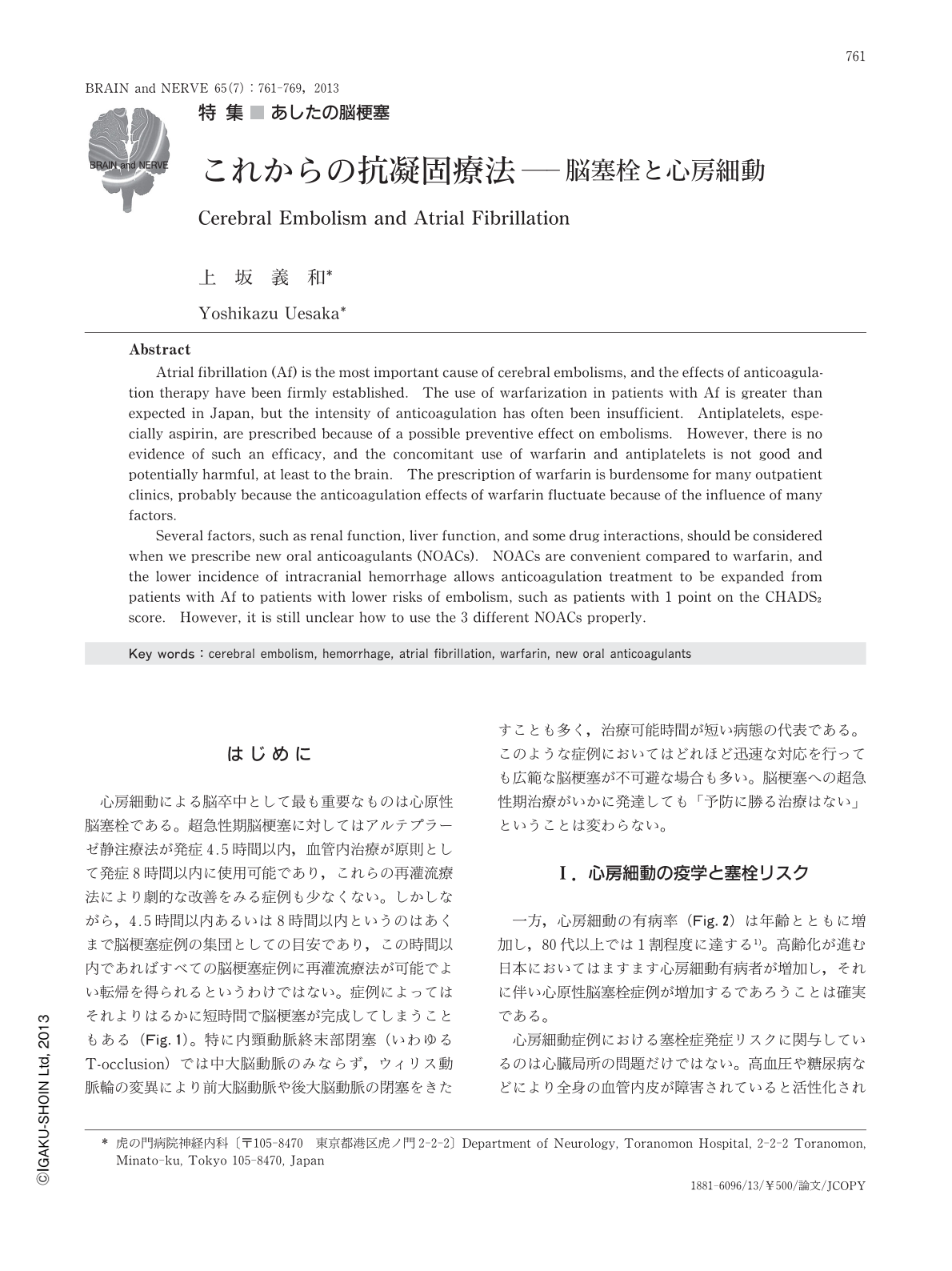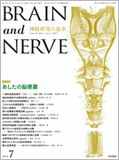Japanese
English
- 有料閲覧
- Abstract 文献概要
- 1ページ目 Look Inside
- 参考文献 Reference
はじめに
心房細動による脳卒中として最も重要なものは心原性脳塞栓である。超急性期脳梗塞に対してはアルテプラーゼ静注療法が発症4.5時間以内,血管内治療が原則として発症8時間以内に使用可能であり,これらの再灌流療法により劇的な改善をみる症例も少なくない。しかしながら,4.5時間以内あるいは8時間以内というのはあくまで脳梗塞症例の集団としての目安であり,この時間以内であればすべての脳梗塞症例に再灌流療法が可能でよい転帰を得られるというわけではない。症例によってはそれよりはるかに短時間で脳梗塞が完成してしまうこともある(Fig.1)。特に内頸動脈終末部閉塞(いわゆるT-occlusion)では中大脳動脈のみならず,ウィリス動脈輪の変異により前大脳動脈や後大脳動脈の閉塞をきたすことも多く,治療可能時間が短い病態の代表である。このような症例においてはどれほど迅速な対応を行っても広範な脳梗塞が不可避な場合も多い。脳梗塞への超急性期治療がいかに発達しても「予防に勝る治療はない」ということは変わらない。
Abstract
Atrial fibrillation (Af) is the most important cause of cerebral embolisms, and the effects of anticoagulation therapy have been firmly established. The use of warfarization in patients with Af is greater than expected in Japan, but the intensity of anticoagulation has often been insufficient. Antiplatelets, especially aspirin, are prescribed because of a possible preventive effect on embolisms. However, there is no evidence of such an efficacy, and the concomitant use of warfarin and antiplatelets is not good and potentially harmful, at least to the brain. The prescription of warfarin is burdensome for many outpatient clinics, probably because the anticoagulation effects of warfarin fluctuate because of the influence of many factors.
Several factors, such as renal function, liver function, and some drug interactions, should be considered when we prescribe new oral anticoagulants (NOACs). NOACs are convenient compared to warfarin, and the lower incidence of intracranial hemorrhage allows anticoagulation treatment to be expanded from patients with Af to patients with lower risks of embolism, such as patients with 1 point on the CHADS2 score. However, it is still unclear how to use the 3 different NOACs properly.

Copyright © 2013, Igaku-Shoin Ltd. All rights reserved.


